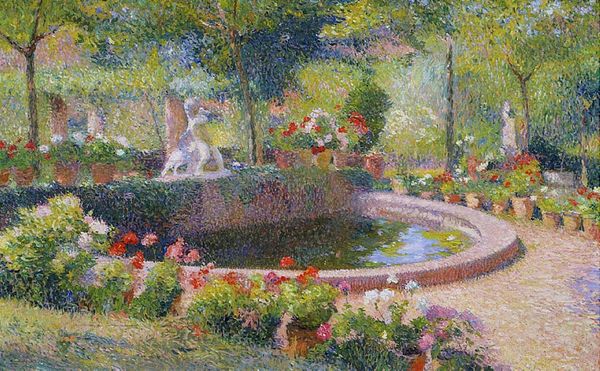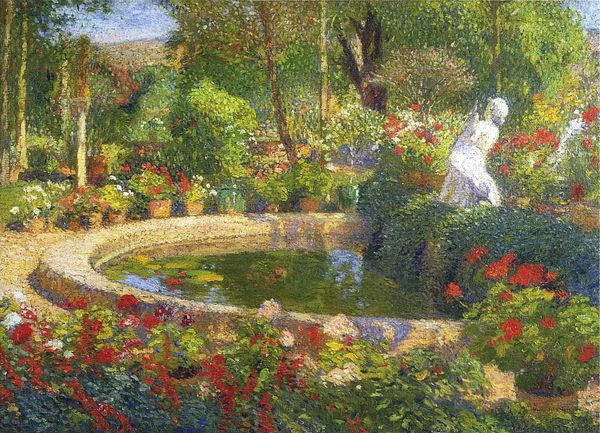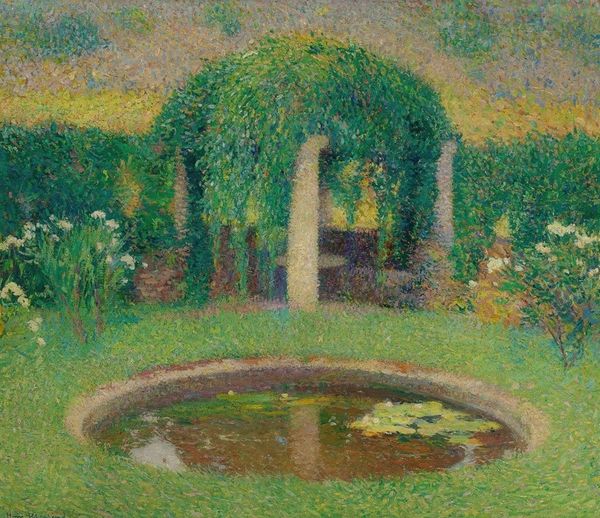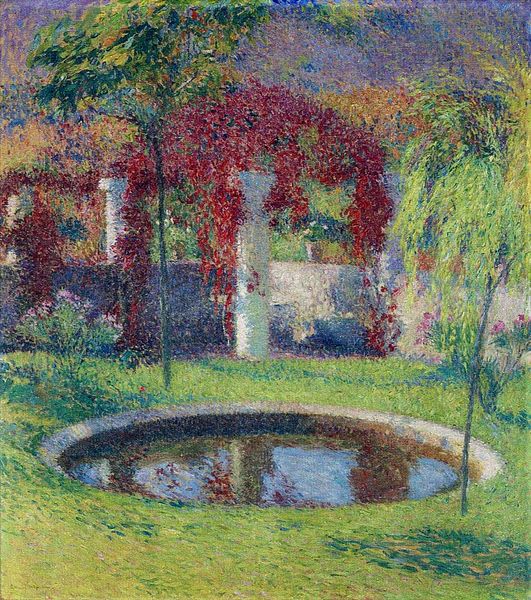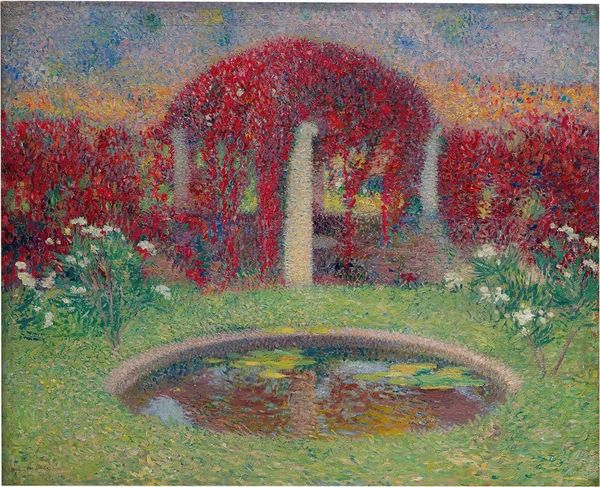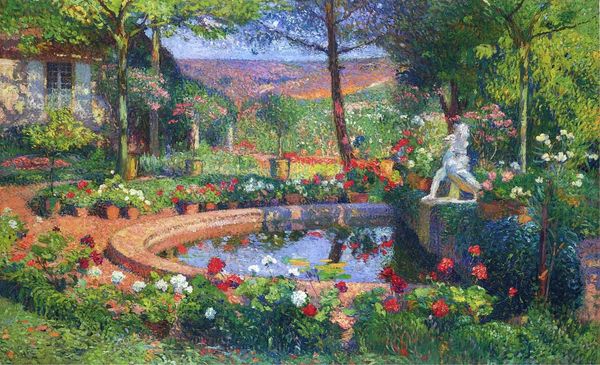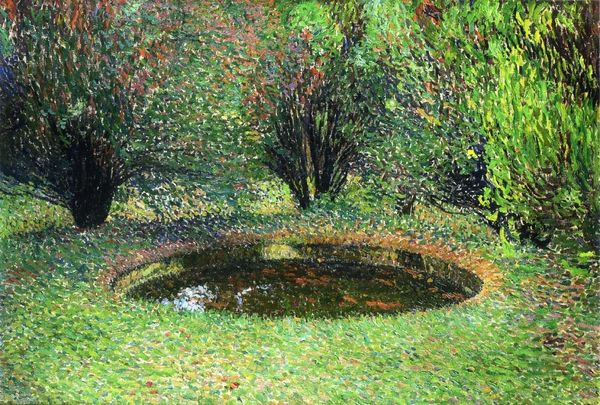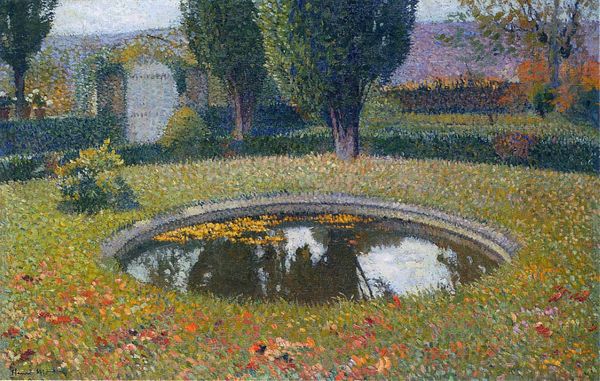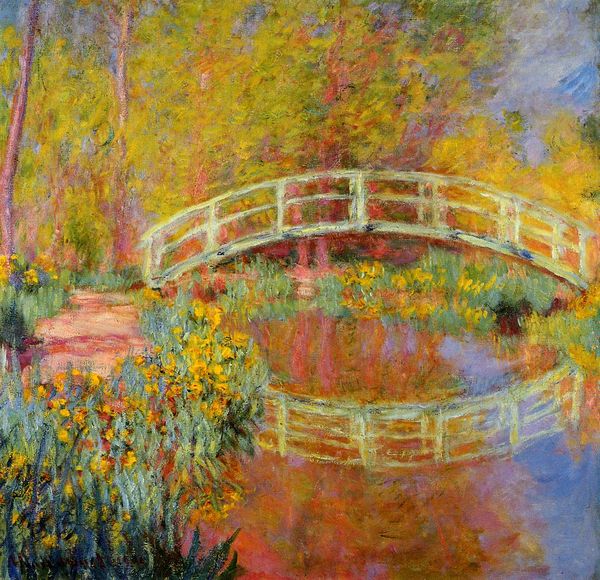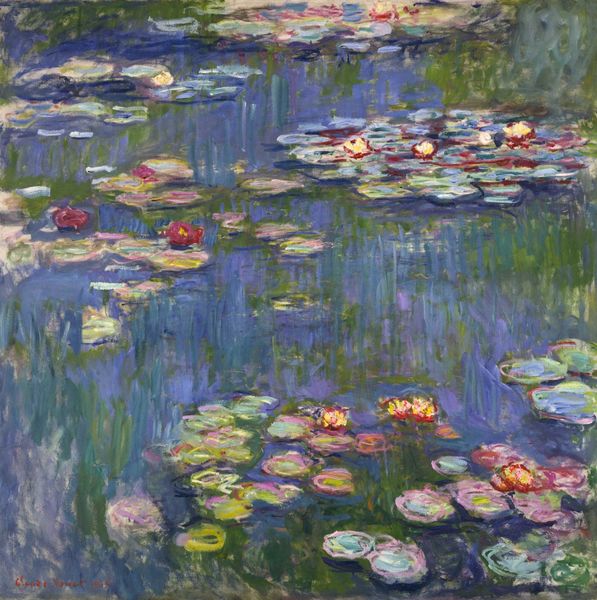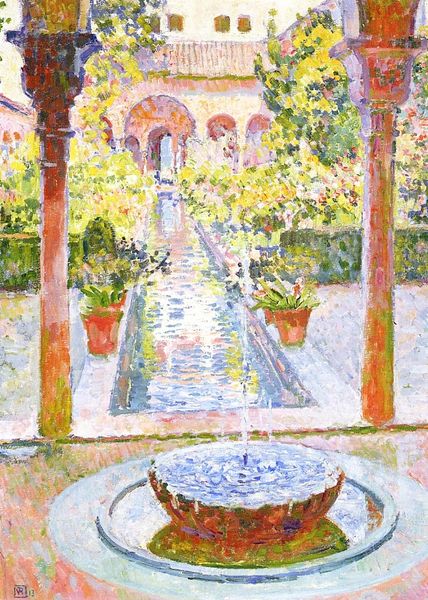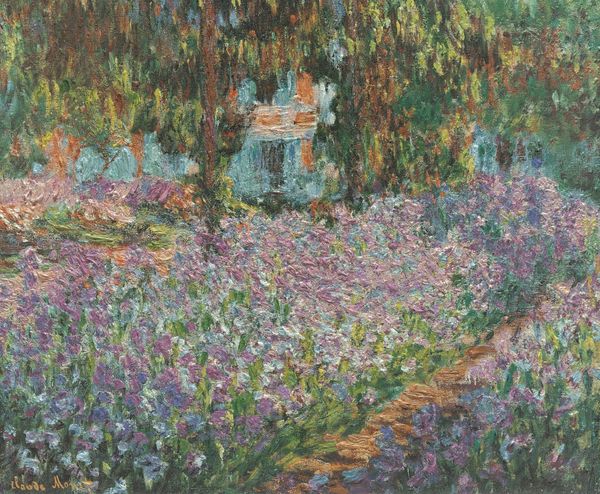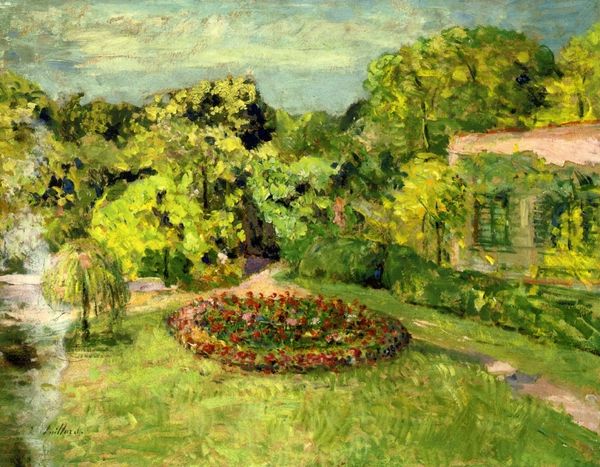
painting, plein-air, oil-paint
#
garden
#
painting
#
impressionism
#
plein-air
#
oil-paint
#
landscape
#
impressionist landscape
#
nature
#
park
Copyright: Public domain
Editor: We’re looking at "Fountain in the Center of the Park" by Henri Martin. It's a riot of color! The scene depicts a garden brimming with flowers surrounding a circular pond. It has an overall dreamy feel. What do you make of it? Curator: The piece, while aesthetically pleasing, also represents a significant shift in the social and cultural role of gardens during the Impressionist era. Can you see how the public display of nature, once confined to royal estates, started permeating the bourgeoisie? Editor: Hmm, I hadn’t thought of it that way. So the artist wasn’t just painting a pretty picture? Curator: Not entirely. Impressionism, with its plein-air approach, made art more accessible, portraying everyday life. Gardens, meticulously arranged and publicly exhibited, were signs of a changing social structure, displaying newfound wealth and leisure. What kind of social message do you think the garden setting sends in those days? Editor: That's interesting. Maybe showing off some cultivated leisure and affluence in those days? Something people were increasingly proud to display? Curator: Exactly. The rise of public parks also democratized nature, turning it into a shared cultural experience, though still regulated and manicured, hinting at the prevailing societal control. It wasn't the wilderness. Editor: So it is a social commentary disguised as a beautiful landscape! I would not have considered how landscape painting could engage in discourses of class and power. Thanks! Curator: My pleasure. By understanding the cultural forces shaping the production and consumption of art, we enrich our experience. I learned more about first impressions too.
Comments
No comments
Be the first to comment and join the conversation on the ultimate creative platform.
